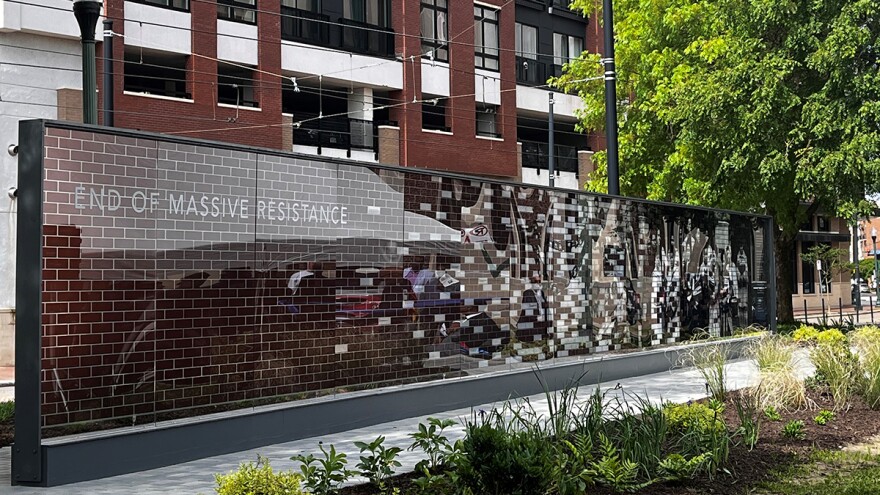Read the original story on WHRO's website.
In the late 1950s, after the ruling in Brown v. Board of Education struck down school segregation, many in Virginia were still holding out.
Rather than allow 17 Black students into white schools in 1958, Norfolk city leaders simply shut the doors of its public schools.
The move left those 17 and thousands of the city’s white students out of school for months. They became known as the Norfolk 17 and the Lost Class of 1959. The city recently unveiled a monument to those students.
One of the Norfolk 17, Lolita Portis, says she never thought this day would come. It took decades for the city to even really acknowledge what happened with the Norfolk 17. The memorial itself has been 14 years in the making.
“I’m so honored. This is here, can be here when I'm long gone and my children can see it, other children. And I want them to know the stories behind us. It’s 17 different, hard-earned education stories,” Portis said.
The new monument at Flatiron Park downtown commemorates the end of that school integration fight. It’s an eight foot tall glass wall that extends nearly sixty feet.
As you progress down the installation, the image of a brick wall gives way, brick by brick, to black-and-white photos of chains on schoolhouse doors and the Norfolk 17 themselves.

Portis posed with an image of herself from a lifetime ago. She said she was emotionally recalling the era.
“I stayed scared. I was devastated. I was only 12. So, you can imagine, young, and so much hatred being thrown at me. And not just by the children, by the adults,” she said.
Lawsuits from both Black and white families eventually forced Norfolk to reopen the schools in February 1959.
Mike Aschkenas was looking forward to his senior year at Granby High School when schools were shuttered.
“We had one girl, one African-American girl, that was going to Granby. So, 2,000 students were out of school at Granby because of one girl. How absurd is that? Could it be any more stupid?” Aschkenas said.
While the schools were closed, Aschkenas’ parents sent him to tutoring sessions at Temple Israel and Ohef Sholom Temple, where he learned from many of the same teachers he would have if he’d been at school. His family joined petitions pushing for the governor to reopen the schools.
When classes finally resumed in February, the Lost Class of 1959 had been decimated.
Some students found jobs or joined the military while the schools were closed and didn’t come back to school. Others had been sent to finish school elsewhere.
“We had a senior class that was going to be in the 470s. We ended up graduating 171 of them,” Aschkenas said.
The effort to commemorate the end of Massive Resistance was discussed on and off by Norfolk's City Council for nearly a decade and a half. The council rejected a previous design in 2010, and then-Mayor Paul Fraim expressed support in 2013 for a memorial to be built during the revamp of Civic Plaza at City Hall. That never happened, and the plan languished until efforts were revived in 2017.
The council also initially rejected a version of the current memorial in 2020. The Black members of the council said then it failed to adequately tell the story of the Norfolk 17. After some small tweaks, the council approved the design in June 2022.
Thursday morning, Norfolk Mayor Kenny Alexander told a gathered crowd the piece will serve as a reminder of “the courage and persistence of the Norfolk 17 and the Lost Class” of 1959.






